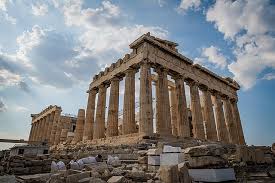Understanding the Parthenon: A Symbol of Ancient Greece

Introduction to the Parthenon
The Parthenon, located on the Acropolis of Athens, is one of the most celebrated monuments of ancient Greece and a symbol of the glory of Athenian democracy. Built in the 5th century BC, the temple was dedicated to the goddess Athena, who was considered the patroness of the city. Its remarkable architecture and artistic significance make it a focal point of historical studies and tourism today.
Historical Context
The construction of the Parthenon began in 447 BC under the leadership of the statesman Pericles, during the height of the Athenian empire. Designed by the architects Ictinus and Callicrates, and adorned by sculptures created by Phidias, it was conceived to serve both religious and cultural purposes. The temple housed a massive statue of Athena Parthenos, crafted from ivory and gold, signifying the wealth and power of Athens.
Architectural Marvel
The Parthenon’s design exemplifies the Doric style of architecture, characterised by sturdy columns and simple lines. With its classic proportions and meticulous attention to detail, the structure represents the pinnacle of ancient Greek architectural achievement. The use of optical refinements, such as slight curvature in the columns, makes the Parthenon visually harmonious, countering the imperfections of straight lines when viewed from a distance.
Significance Over Time
Over the centuries, the Parthenon has endured various transformations. Initially a temple, it was converted into a Christian church and later a mosque during the Ottoman period. Despite suffering significant damage from wars, particularly the Venetian attack in 1687, efforts have been ongoing to restore and preserve the site. Today, the Acropolis Museum houses many of the surviving sculptures and artefacts, highlighting its historical importance.
Current Relevance
The Parthenon remains a powerful symbol of democracy and cultural heritage. It is a UNESCO World Heritage Site and attracts millions of visitors every year. The ongoing debates over the Parthenon Marbles, taken by Lord Elgin in the early 19th century, continue to fuel discussions about cultural repatriation and the preservation of ancient artefacts.
Conclusion
The Parthenon is more than just a remnant of ancient architecture; it embodies the values of a society that shaped Western civilization. As we face contemporary challenges of cultural identity and heritage preservation, the Parthenon serves as a lasting reminder of humanity’s artistic and philosophical ambitions. Future restoration efforts and research will ensure that this iconic monument continues to inspire wonder and respect for generations to come.







